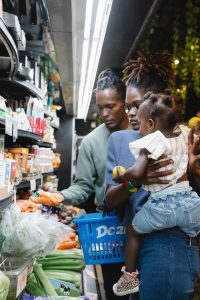Spanish Level 2- Activities Designed for Online Instruction
🤩 Spanish Level 2, Activity 05: Me Gusta, Me Encanta… / I Like, I Love… (Online)

World-Readiness Standards:
- Standard 1.1 – Students engage in conversations, provide and obtain information, express feelings and emotions, and exchange opinions.
- Standard 1.2 – Students understand and interpret spoken and written Spanish on a variety of topics.
- Standard 1.3 – Students present information, concepts, and ideas in Spanish to an audience of listeners or readers on a variety of topics.
- Standard 2.1 – Students demonstrate an understanding of the relationship between the practices and perspectives of Hispanic cultures.
Idaho State World Language Standards:
- COMM 1.1 – Interact and negotiate meaning (spoken, signed, written conversation) to share information, reactions, feelings, and opinions
- COMM 2.1 – Understand, interpret, and analyze what is heard, read, or viewed on a variety of topics. COMM 3.1 – Present information, concepts, and ideas to inform, explain, persuade, and narrate on a variety of topics using appropriate media in the target language.
- CLTR 1.1- Analyze the cultural practices/patterns of behavior accepted as the societal norm in the target culture.
- CONN 1.1- Compare and contrast information acquired from other content areas.
- COMT 1.2 – Discuss personal preferences in activities and events, both within and beyond the classroom.
NCSSFL-ACTFL Can-Do Statements:
- I can exchange preferences with my friends about our likes and dislikes
- I can say if I agree or disagree with someone’s preferences
- I can compare and contrast preferences with those from Spanish-speaking countries (Intercultural)
Materials Needed
Warm Up
- Begin by opening the Google Slideshow and introducing the Can-Do Statements.
Hola, ¿cómo están? Estoy ____. Vamos a empezar el lab de hoy con los can-do statements. - Today we are going to practice the use of verbs such as gustar. We are going to talk about our favorite things and also our favorite things. In order to start, we have a presentation, and you all are going to share your preferences. It’s important to respond with complete sentences.
Hoy vamos a practicar el uso de verbos como gustar. Vamos a charlar sobre nuestros gustos favoritos y también menos favoritos. Para empezar, tengo una presentación y ustedes van a compartir sus preferencias. Recuerden es importante que respondan con frases completas. - Using the first 8 slides of the Google slide presentation, ask each question presented on the slides and ensure each student answers the question in a complete sentence.
Por Ejemplo: ¿Qué soda te gusta más? Todos los estudiantes contestarán la pregunta en una frase completa.- Then give the cultural fact about the slide by clicking the right arrow button.
- Por Ejemplo: A los peruanos, les gusta beber la Inca Kola
Main Activity A
- Play the game “What do you like?” Students will be given a prompt (found on the Google Slides), and go into their house/ room to find an object. Students will return to the camera to show the class the object. If they are not able to physically retrieve an object or are not at home, they can google image search and show the class on their phone.
“Vamos a jugar un partido. Aquí están las reglas:
- Voy a decir: “Encuentra un _____ que te gusta”
- Necesitas encontrar el objeto en tu casa/dormitorio/apartamento
- Trae el objeto a la camera
- Explica a la clase porque te gusta el objeto
- Make sure each student explains why they like each object using full sentences. Ask some follow-up questions to learn more about each student and what they like.
Main Activity B
- Now we are going to share our preferences about some fun things. We have some slides that have two photos. For example, Pepsi and Coca-Cola. One person is going to use the emoji to create a sentence using the verb they receive.
Ahora vamos a compartir nuestras preferencias sobre algunos temas divertidos. Tengo algunas diapositivas que tienen dos fotos. Por ejemplo, Pepsi y Coca-Cola. Una persona va a usar el emoji y va crear una oración usando el verbo que recibe.
- Repeat for the rest of the activity. Make sure students are answering in full sentences.
Wrap Up
- Ask students the following questions to finish the lab:
- ¿Qué te gusta hacer en tu tiempo libre? (What do you like to do on your free time?)
- ¿Qué tipo de música te gusta más? (What type of music do you like to the most?)
- ¿Qué actividades te gusta hacer con amigos? (What activities do you like to do with friends?)
- ¿Qué estación del año te gusta más? (What season of the year is your season?)
End of Lab
- Read Can-Do statements once more and have students evaluate their confidence.
(Use thumbs up/thumbs down or download our student cards) - Encourage students to be honest in their self-evaluation.
- Pay attention, and try to use feedback for future labs!
Can-Do Statements:
- I can exchange preferences with my friends about our likes and dislikes
- I can say if I agree or disagree with someone’s preferences
- I can compare and contrast preferences with those from Spanish-speaking countries (Intercultural)
Cultural NOtes:
How to Revise or Remix a Pathways Project Activity
Feeling creative? The Pathways Project needs your help in revising and remixing activities for the K-16 language classroom.
Try taking an activity to the next level by:
- Add new content (something you’ve created or another OER source)
- Contribute additional activity suggestions
- Integrate authentic materials such as videos, infographics, photos, etc.
- Suggest how to implement the activity in the classroom
- Customize the content for a specific audience or group of learners (for example, K-5 learners or to differentiate for student’s needs)

